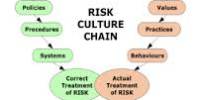Rural development is the process of enhancing people’s quality of life and economic well-being in rural areas, which are generally isolated and sparsely inhabited. It refers to the process of enhancing rural areas’ economic, social, and environmental well-being, which is often defined by lower population densities and an emphasis on agriculture, forestry, and natural resource-based activities. This development strives to improve rural populations’ living standards and to promote sustainable and inclusive rural economies.
Traditionally, rural development has focused on the exploitation of land-intensive natural resources such as agriculture and forestry. Changes in global industrial networks, however, and rising urbanization, have altered the character of rural areas. Rural tourism, specialist manufacturing, and recreation have increasingly displaced resource extraction and agriculture as primary economic drivers. The necessity for rural areas to approach development from a broader viewpoint has resulted in a greater emphasis on a diverse range of development goals rather than simply offering incentives for agricultural or resource-based enterprises.
Here are some key aspects and strategies related to rural development:
- Agricultural Development: Agriculture is frequently the lifeblood of rural economies. Rural development programs usually focus on upgrading farming practices, enhancing crop yields and farm revenue, and increasing access to improved seeds and technologies.
- Infrastructure Development: Roads, electricity, clean water supply, and healthcare facilities are all necessary for rural development. The construction and upkeep of these amenities can improve the general quality of life in rural communities.
- Education and Skill Development: Education and skill-building initiatives assist rural residents in gaining the information and skills required for better job possibilities. This, in turn, has the potential to alleviate poverty and improve the quality of life in rural communities.
- Job Creation: Encouraging small and medium-sized enterprises (SMEs) and promoting non-farm rural industries can provide job opportunities to rural populations. Initiatives like microfinance and entrepreneurship development can foster economic growth in rural areas.
- Healthcare Services: Access to healthcare services, including clinics and hospitals, is crucial for rural development. Improving healthcare infrastructure and providing preventive healthcare programs can enhance the overall well-being of rural communities.
- Agricultural Diversification: Encouraging diversification beyond traditional farming, such as agribusiness, agro-processing, and eco-tourism, can reduce the dependency on agriculture and make rural economies more resilient.
- Natural Resource Management: Sustainable management of natural resources like land, water, and forests is important for rural development. Practices that preserve and enhance these resources are crucial for long-term prosperity.
Education, entrepreneurship, physical infrastructure, and social infrastructure are all essential factors in rural development. The emphasis on locally produced economic development techniques is another feature of rural development. In contrast to metropolitan areas, which share many characteristics, rural areas are significantly unique. As a result, there are numerous rural development approaches in use around the world.
Rural development is a multidimensional and ongoing process including collaboration between governments, non-governmental organizations (NGOs), the commercial sector, and local people. Depending on the particular difficulties and opportunities in each rural area, specific tactics and priorities may differ from one location to the next.
















